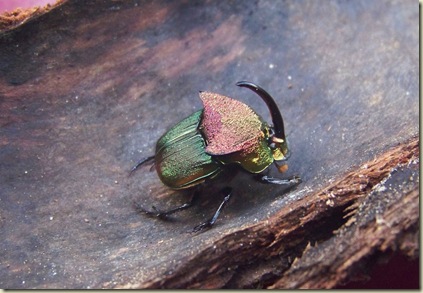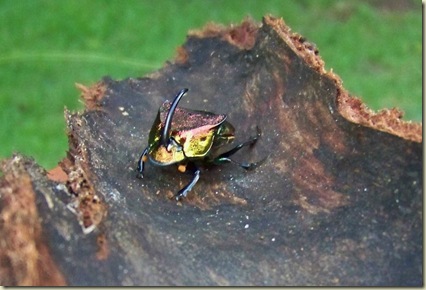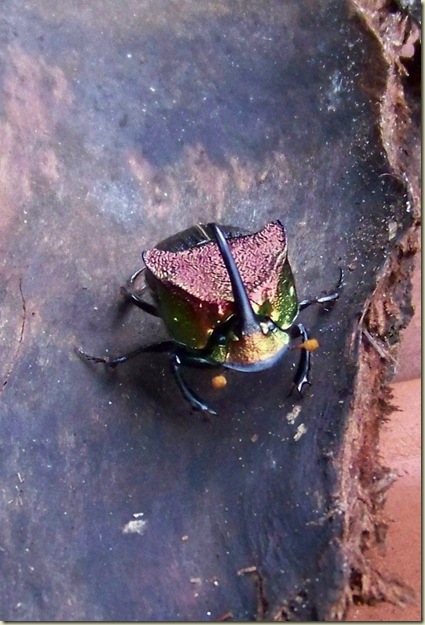 I was out walking this week and almost stepped on this brilliant scarab beetle that was in the road. On my way back, it was still there, a bit to my surprise since cars had been by. So I scooped it up on this piece of rotting bark and brought it home to photograph.
I was out walking this week and almost stepped on this brilliant scarab beetle that was in the road. On my way back, it was still there, a bit to my surprise since cars had been by. So I scooped it up on this piece of rotting bark and brought it home to photograph.
If you can get past the gross factor of what they do for a living, dung beetles are some of the most amazing insects. If you are not familiar with their work, they are sewer workers of the most basic kind. They scout out animal dung and roll it into balls larger than themselves. They take it to a place they think looks right and then dig a hole under it and allow it to drop. Once below ground, they reshape it and feed on it. A female will also lay eggs on it and then the larvae will also feed on it. Any leftovers become fertilizer for the surrounding plants. It is an important job.
Dung Beetles belong to the large family of scarab beetles. About 35,000 species of scarabs have been formally described by scientists, worldwide.
The ancient Egyptians worshipped dung beetles. They believed that the scarab was one of the forms under which their sun-god appeared. When the brightly colored beetles rolled the ball of dung along the ground, the ancient Egyptians thought it was like the sun crossing over the earth during each day. Scarab figures were carved into stones and worn as charms for good luck and protection from evil. Dung beetles were also seen as symbols of immortality, when they went into holes in the ground and returned to the surface.
Look at the way the colors change at different angles. Also, notice the golden clubs on the ends of the antennae. They were actually quite fuzzy. And what a horn!! Some scarab beetles are called rhinoceros beetles.
I let it go after I had taken pictures of it: keep on rollin', little guy!


This is so beautiful. Do you know what species it is?
ReplyDelete